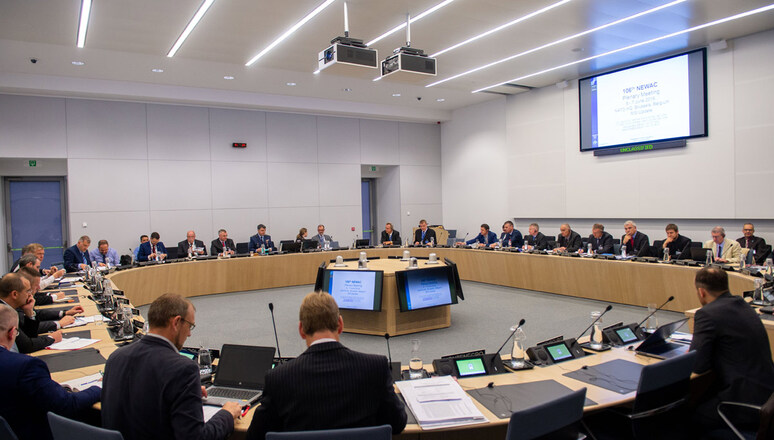Committees
NATO committees form an indispensable part of the Alliance’s decision-making process. They provide the framework within which member countries can exchange information on a variety of subjects, consult with each other and take decisions by consensus and common accord.

- NATO committees form an indispensable part of the decision-making process since they enable members to exchange information, consult with each other and take decisions.
- All member countries are represented at all levels of the committee structure in the fields of NATO activity in which they participate.
- Every day, national experts travel to NATO Headquarters in Brussels to attend committee meetings held with delegates from the national representations based at NATO Headquarters and with staff from the International Staff and the International Military Staff.
- NATO has an extensive network of committees, covering everything from political, to technical or operational issues. Some of the committees are supported by working groups.
- The principle of consensus decision-making is applied at each and every level of the committee structure, from the top political decision-making body to the most obscure working group.
- The North Atlantic Council is the principal political decision-making body within NATO and the only committee that was established by the founding treaty (Article 9).
The principal committees
The North Atlantic Council (Council or NAC) is the principal political decision-making body within NATO and the only committee that was established by the Alliance's founding treaty. Under Article 9, the NAC is invested with the authority to set up "such subsidiary bodies as may be necessary" for the purposes of implementing the treaty. Over the years, the Council has established a network of committees to facilitate the Alliance's work and deal with all subjects on its agenda.
The principal NATO committees are the NAC, the Nuclear Planning Group (NPG) and the Military Committee (MC). The Defence Planning Committee (DPC), which was also one of NATO's top decision-making bodies, was dissolved under the June 2010 committee reform and its functions taken over by the NAC.
Committees reporting to the North Atlantic Council
In addition to the NAC, the NPG and the MC, there are also a number of committees that report directly to the Council. Some of these are themselves supported by working groups, especially in areas such as defence procurement.
As part of the NATO reform process initiated in June 2010, which focused on the NATO Command Structure and NATO Agencies, NATO Committees were also reviewed. As such, committees reporting to the NAC now include the following:
- Deputies Committee
- Political Committee
- Partnerships and Cooperative Security Committee
- Defence Policy and Planning Committee
- Committee on Proliferation
- Digital Policy Committee
- Operations Policy Committee
- High Level Task Force on Conventional Arms Control
- Verification Coordinating Committee
- Conference of National Armaments Directors
- Committee for Standardization
- Logistics Committee
- Resource Policy and Planning Board
- Integrated Air and Missile Defence Policy Committee
- Aviation Committee
- Resilience Committee
- Committee on Public Diplomacy
- Council Operations and Exercises Committee
- Security Committee
- Civilian Intelligence Committee
- Archives Committee
Additionally, there are institutions of cooperation, partnership and dialogue that underpin relations between NATO and other countries.
Evolution
With the exception of the NAC, committees were gradually established after the signing of the Washington Treaty on 4 April 1949 (for further information on how the committee structure evolved, see "NATO: The first five years, 1949-1954", by Lord Ismay).
From time to time, the NATO committee structure is reviewed and reorganised so as to make it more efficient, responsive and relevant to NATO's current priorities. This includes eliminating obsolete committees and creating new bodies.
Since its creation in 1949, the Alliance has undergone three major committee restructurings. The first took place in 1990 after the end of the Cold War, and the second in 2002, in the wake of the terrorist attacks of September 11, 2001 against the United States. The third and most recent committee review was initiated in June 2010 as part of a broader reform effort that touched on all of the Alliance's structures: the military command structure and its Organisations and Agencies. The review aimed to help NATO respond more effectively to security concerns and to the need for more integrated, flexible working procedures.
